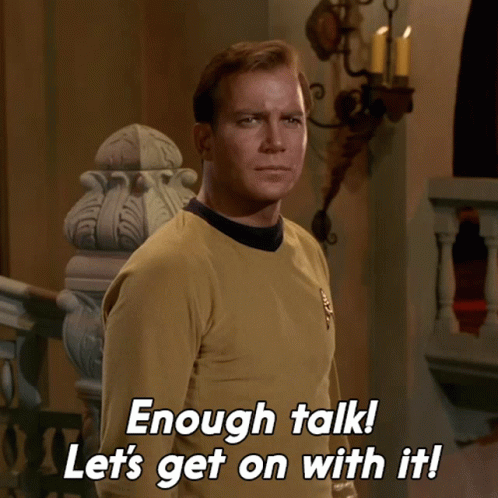The Intersection Digital Leadership Series: Adaptive Leadership
Episode 2 - Adaptive Leadership create Adaptive Enterprises
This is the second in a four-part series examining how established enterprises can embrace agility and thrive in the face of disruption. In Episode 1 (The Urgency of Adaptability: Why Dinosaurs Don't Do Digital), we looked at the relevance of adaptability to enterprise-size organisations and what features mark inflexible enterprises. In this episode, we will be looking at the importance of adaptable leadership in creating adaptable enterprises. We will also look at a number of characteristics of adaptable leadership – leveraging the example of Steve Jobs' time at Apple. I hope you glean a few practical insights from this week's episode. Your thoughts, comments, and feedback are always useful, as knowledge is never monolithic.
Return of the Mac
When Steve Jobs returned to Apple in 1997 after a 12 year hiatus, the company was floundering, its once-innovative spirit dimmed by years of internal strife and misguided product strategies. Jobs, however, possessed a clarity of vision that cut through the fog of uncertainty. He saw a future where technology was functional, beautiful, personal, and empowering. This vision, coupled with his relentless drive and an almost uncanny ability to anticipate customer trends, fuelled Apple's resurgence. He steered the ship out of stormy waters, re-engineering it mid-voyage, transforming it from a niche computer manufacturer into a global technology powerhouse. At the time of his return, Apple's market capitalisation stood at a paltry £1.2 billion. By 2011, it had soared to over £280 billion, a testament to Jobs’ transformative leadership.
Today, many organisations find themselves adrift in a sea of accelerating change, clinging to outdated practices and hierarchical structures like life rafts in a storm. This inflexibility manifests in a myriad of ways: resistance to innovative ideas, siloed departments that stifle collaboration, a fear of failure that paralyses action, and cumbersome decision-making processes that impede agility. These organisations become trapped in a cycle, their rigidity breeding at least a degree of inertia - or outright immobility, ultimately leading to missed opportunities, declining market share, and an inability to attract or retain top talent.
Strong vs. Adaptive Leadership
In turbulent, disruptive environments, leadership is the compass and the rudder, guiding the enterprise towards safe harbour. Adaptive leaders are those who can anticipate shifting tides, navigate treacherous currents, and inspire their crew to embrace the challenges of the journey. According to McKinsey, highly successful agile (adaptive) transformations led to a three times higher chance of Enterprises being a top-quartile performer among peers. What qualities enable leaders at these adaptive organisations chart a course through the storm and emerge stronger on the other side?
The Jobs Blueprint: A Framework for Adaptive Leadership
While there is no single mould for an adaptive leader, we can discern key traits from those who have successfully steered their organisations through periods of profound change. Steve Jobs, as chronicled in Walter Isaacson's insightful biography, provides a compelling case study.
Big Vision: Jobs possessed an uncanny ability to anticipate future trends and articulate a clear direction. He famously declared, "Innovation distinguishes between a leader and a follower." This vision wasn't just about technology. It was about the human experience, about empowering people to create and connect. He understood that the personal computer was not just a tool but a gateway to a world of possibilities. Similarly, Mary Barra, CEO of General Motors, has demonstrated a clear vision for the future of mobility, steering the automotive giant from bankruptcy towards profitability, electric vehicles and autonomous driving technology.
Courage to make big moves: Jobs wasn't afraid to challenge the status quo, even when it meant making unpopular decisions. He famously discontinued the Newton, Apple's foray into handheld computing soon after his return, despite significant investment, recognising that it didn't align with his vision for the future. "We were spending a lot of money on it, but it wasn't great," Jobs admitted. This willingness to pivot, to abandon sunk costs and embrace new directions, is a hallmark of courageous adaptive leadership. In 2022, Dame Emma Walmsley, CEO of pharma giant GlaxoSmithKline (GSK), demonstrated courage by divesting the company's consumer healthcare division to focus on innovative vaccines and specialty medicines.
Communicate with clarity: Jobs was a master storyteller, able to articulate his vision with tangible passion and seering clarity, inspiring both his employees and the public. His product launches were legendary, captivating audiences with his charisma and showmanship. Similarly, Indra Nooyi, former CEO of PepsiCo, was renowned for her authentic and engaging communication style, fostering a strong connection with employees and stakeholders. Effective communication is crucial for fostering buy-in, aligning teams, and navigating the inevitable anxieties that accompany any kind of change.
Empower their teams: Jobs built a team of exceptionally talented individuals and gave them the autonomy to excel. He famously said, "It doesn't make sense to hire smart people and then tell them what to do; we hire smart people so they can tell us what to do." This approach fostered a culture of ownership and accountability, allowing Apple to innovate at a rapid pace. Reed Hastings, CEO of Netflix, also champions a culture of creative freedom and responsibility, empowering employees to make decisions and take ownership of their work.
Learning agility: Jobs was a voracious learner, constantly seeking new knowledge and experiences. For instance, Jobs’ personal quest to understand calligraphy effectively led to the creation of the range of fonts we all enjoy today. He was also willing to admit his mistakes and adapt his approach. He reflected on his early failures, such as the Lisa computer and his ouster from Apple, improving his leadership style, and enhancing his impact in his latter years. At Manchester United, former manager Sir Alex Ferguson, exemplified agility by constantly adapting his teams, tactics and management style to stay ahead of the competition. Similar adaptability has been sorely lacking at the club in recent years.
Resilience: Jobs faced numerous setbacks, including Apple's near-collapse in the 1990s and his own health challenges. Yet, he never gave up, maintaining an unwavering belief in his vision and inspiring his team to persevere. Similarly, Oprah Winfrey, mogul and philanthropist, has overcome numerous personal and professional challenges to build a global media and lifestyle empire.
Customer-centricity: Jobs was obsessed with creating products that delighted customers. He believed that technology should be intuitive and user-friendly, and he instilled this ethos in Apple's culture. "You've got to start with the customer experience and work back toward the technology – not the other way around,..." he famously said. This focus on customer needs was a key driver of Apple's success. You could argue he was the father of customer-centricity, influencing innovators like Jeff Bezos, Elon Musk and Satya Nadella in building great products people love.
Charting Your Course: Actionable Steps for Adaptive Leaders
While every leader is unique, the traits exemplified by Steve Jobs and other adaptive leaders provide a useful framework for navigating the complexities of the modern business landscape. Leaders who cultivate these qualities can foster a culture of agility, empower their teams to embrace change, and steer their organisations towards a more successful future.
To embark on this journey of adaptive leadership, consider these actionable steps:
Seek out challenging assignments and opportunities for growth. Step outside your comfort zone and embrace new experiences that will broaden your perspective and develop your skills. You have greater legitimacy as an adaptive leader when you lead from your own personal transformation
Cultivate a growth mindset and embrace continuous learning. Be open to new ideas, feedback, and perspectives. Never stop learning and evolving. Openly and frequently explore new ideas with your team.
Build strong communication and interpersonal capacities. Learn to articulate your vision with clarity, passion and a willingness to listen to other views. Foster open dialogue within your team.
Foster a culture of collaboration and innovation. Encourage experimentation, risk-taking, and knowledge sharing. Celebrate even the smallest innovations. These are seeds that regenerate into bigger changes in future.
Prioritise customer needs and feedback. Develop a culture of acquiring a deep understanding of your customers and align your organisation's efforts around those needs.
These are insights for adaptive leadership. They are guides, and not prescriptive. From time to time, test how adaptive your leadership is against these points, and make amendments where you feel is necessary. Let me know how you get on, or where we can share our insights - in the spirit of adaptive leadership.
In the next episode, we'll look at a practical framework for leading change, providing you with simple tools and strategies to transform your vision for an Adaptive Enterprise into a reality. We'll explore practical ways to mobilise your team, overcome resistance, and steer your organisation towards a more dynamic innovative future. Don't miss the episode, as we get into the heart of Building truly Adaptive Enterprises.








